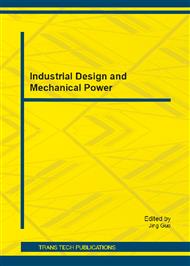p.47
p.51
p.55
p.61
p.65
p.69
p.73
p.77
p.82
Modeling of Fatigue Crack Growth under High-Low Sequence Loading
Abstract:
The fatigue crack growth behavior of one compact tension specimen of 16MnR steel under high-low sequence loading was investigated. The symmetric half finite element model under plane-stress state was used to calculate the elastic-plastic stress-strain responses, in which the Armstrong-Frederick type cyclic plasticity model was implemented as a user material subroutine UMAT of ABAQUS. A recently developed dynamic crack growth model was used to simulate the effects of high loading step on the successive low loading step. The detailed evolution process of the crack closure and cyclic plastic zone within the retardation region of fatigue crack growth was obtained. The extend of the crack closure, the size of cyclic plastic zone and the stress gradient have significant influence on the fatigue crack growth rate. The predicted fatigue crack growth rate is in good agreement with the experimental data.
Info:
Periodical:
Pages:
65-68
Citation:
Online since:
November 2012
Authors:
Keywords:
Price:
Сopyright:
© 2012 Trans Tech Publications Ltd. All Rights Reserved
Share:
Citation:


